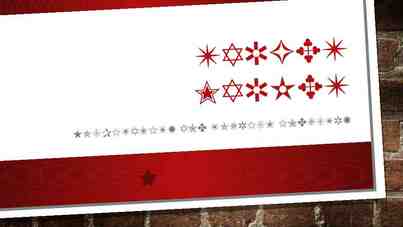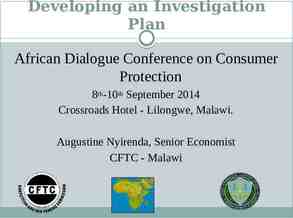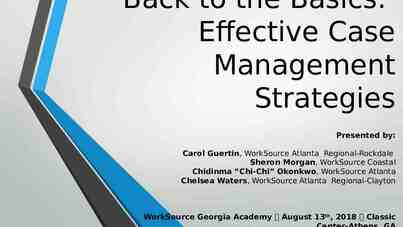The Byzantine Empire What happened after the fall of Rome?
28 Slides4.83 MB

The Byzantine Empire What happened after the fall of Rome?

WESTERN ROMAN EMPIRE EASTERN ROMAN EMPIRE WHERE IS THE BYZANTINE EMPIRE

WHY DID THE BYZANTINE EMPIRE CONTINUE TO THRIVE AFTER THE FALL OF ROME?

The Great Schism(split) Empire (Rome) was divided East vs. West Originally divided by Diocletian(285 AD) Divide furthered during the fall of Rome Great Schism Occurs: Argument over the use of Icons in service East outlawed/banned Icons West condemned the East for banning Became rivals- although the same faith Leaders excommunicate each other

Eastern vs Western Empire Western Roman Catholic Church Spoke Latin Headed by Pope Capital: Rome Priest, Popes, and Bishops could not have wives Eastern (Greek) Orthodox Spoke Greek Headed by Patriarch Capital: Constantinople Clergy could marry

A New Rome in a New Setting The Eastern Roman Empire Roman Empire officially divides into East and West in 395. Eastern Empire flourishes; becomes known as Byzantium Justinian becomes emperor of Byzantium in 527. His armies reconquer much of the former Roman territory. Byzantine emperors head state and church Goal to become a “New Rome”

Building a New Rome Creating the Imperial Capital Justinian launches a program to beautify the capital, Constantinople. Its location made it Europe's busiest trade port, linking Europe with Asia Constructs new buildings; builds magnificent church, Hagia Sophia. A new “King Solomon's Temple” Byzantines preserve Greco-Roman culture and learning.

Life in the New Rome Justinian seeks to revise and update laws for governing the empire Justinian Code Laws were more fair to women Slavery was legal and slaves must obey their masters Punishments fit the crime Inspired the modern concept and, the word "justice". Simplifies and organizes laws, helps to unify Code regulates much of Byzantine life; lasts for 900 years.

The Empire Falls Years of Turmoil Justinian dies in 565; the empire faces many crises after his death Byzantium faces attacks from many different groups Served as a buffer for Wester Europe The long decline began in 11th century when the Muslim Turks invaded Western Christians drained Crusaders, sacked Constantinople in 1204 In 1453, the Ottoman Turks conquered Constantinople and renamed it Istanbul

The Russian Empire Russia grows out of a blending of Slavic and Byzantine cultures and adopts Eastern Orthodox traditions.

Russia’s Birth Emergence of Russian Culture Byzantium trades with Slavs—groups living north of the Black Sea. Eventually Slavic and Byzantine traditions produce Russian culture. Wanted Moscow to be the “Third Rome” Geography of Russia 3 regions helped shape early Russian life North-Lumber and hunting South-Fertile land for farming Steppe-treeless grassland Open to nomads

Russia’s Birth Slavs and Vikings In the 800s, Vikings settle among Slavs, and move to Kiev Vikings and Slavs mix cultures and become one. Kiev Commercial city in Ukraine established by Vikings in 9th c., Became the center for a kingdom that flourished until the 12th c.

Russia’s Birth Becomes Orthodox Princess Olga of Kiev visits Constantinople and converts to Christianity Her grandson, Vladimir, becomes leader of Kiev around 980 In 989, Vladimir has all Kiev citizens baptized in the Dnieper River Beliefs and traditions of Orthodox Christianity flourish The church was a part of the government, it remained a pillar of state power, not a rival

Why Orthodox Christianity? “The earliest Russian chronicle reports that Vladimir and his advisers decided against Islam as the official religion because of its ban on alcohol .” “Why Vladimir chose Orthodox Christianity over the Latin version is not precisely known. The magnificence of Constantinople seems to have been a consideration.” Earth and Its Peoples, third ed., page 233-234

Kiev’s Power and Decline Kievan Russia Vladimir expands Russia into Poland, and north to the Baltic Sea. Vladimir’s son, Yaroslav the Wise, rules Kiev from 1019-1054. Golden Age Forges alliances, creates legal code, and builds churches.

Kiev’s Power and Decline Kiev’s Decline Yaroslav divides realm between his sons, which causes a civil war. Similar to who? Kiev’s commerce in further weakened by the Crusades War tends to slow foreign trade, especially since they were trading with Constantinople.

WHAT DOES IT MEAN TO BE AN ABSOLUTE RULER? Advantages? Disadvantages?

The Mongol Invasions The Mongols Mongols, nomads from central Asia, begin conquests in the early 1200s. Kiev falls in 1240 to Genghis Khan’s grandson, Batu Khan. Mongols rule much of Russia for the next 200 years.

The Mongol Invasions Effects of Mongol Conquest Mongols give Russians many freedoms, but demand obedience and tribute. Russian nobles such as Alexander Nevsky support the Mongols. The absolute power of the Mongols served as a model for later Russian rulers Mongol rule isolates Russia from the rest of Europe.*** As the rest of Europe is advancing with technology Russia remains behind .trend

Russia Breaks Free During the Mongol period the princes of Moscow steadily increased power Moscow is founded in the 1100s, located near Russia’s three main rivers. Russian Orthodox Church made Moscow their capital, now a religious and political center

Russia Breaks Free An Empire Emerges Late in the 1400s, Ivan III becomes prince of Moscow and challenges Mongol rule. Known as Ivan the Great He takes the name “czar,” Russian for “Caesar,” and vows to restore Russia. Defeats the Mongols and built the framework for absolute rule

Ivan the Terrible Ivan IV Grandson of Ivan the Great, first Russian ruler officially crowned czar Nobles granted land for military service Tied serfs to land As feudalism was fading in Western Europe, Russia was expanding upon it Violent, killed own son Created his own secret police, who wore black robes and rode black horses Introduced Russia to extreme absolute power Eastern Europe**************












